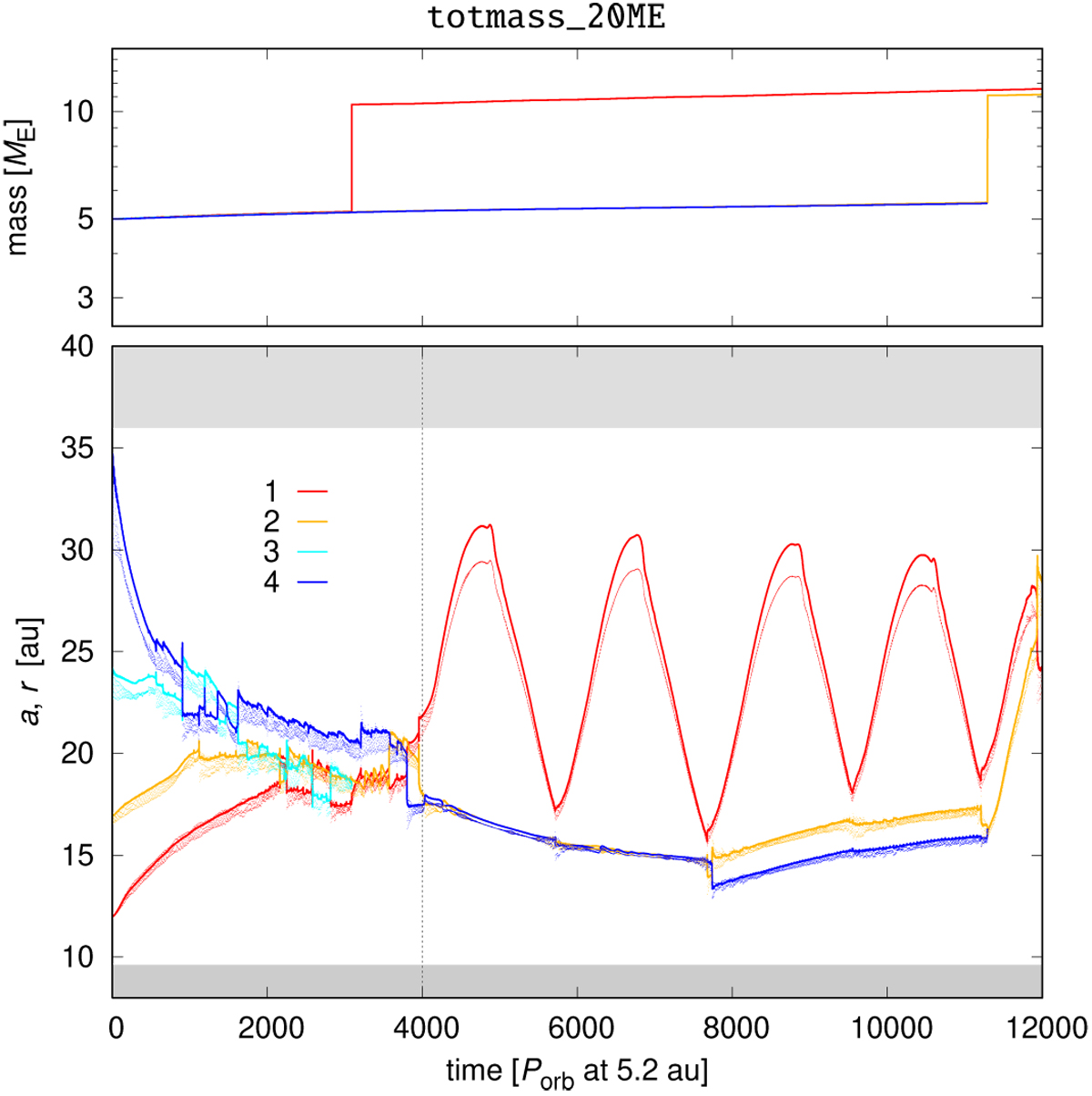Fig. 16

Same as Fig. 3 for the simulation with 5M⊕ embryos. We model an outer disc here, because the convergence radius turned out to be far (21 au). After numerous exchanges, temporary co-orbitals, and one merger, a relatively stable co-orbital is formed at t ≐ 4000 Porb. Embryo 1 isthen pushed outwards by a dynamical torque created by an underdense tadpole-like region (Pierens 2015). At t ≐ 4900 Porb the tadpole region is refilled by a material originating from the inner spiral arm, and embryo 1 is pushed inwards, until it encounters the co-orbital. This behaviour is systematically repeated, and results in a disruption of the co-orbital, and a merger.
Current usage metrics show cumulative count of Article Views (full-text article views including HTML views, PDF and ePub downloads, according to the available data) and Abstracts Views on Vision4Press platform.
Data correspond to usage on the plateform after 2015. The current usage metrics is available 48-96 hours after online publication and is updated daily on week days.
Initial download of the metrics may take a while.


